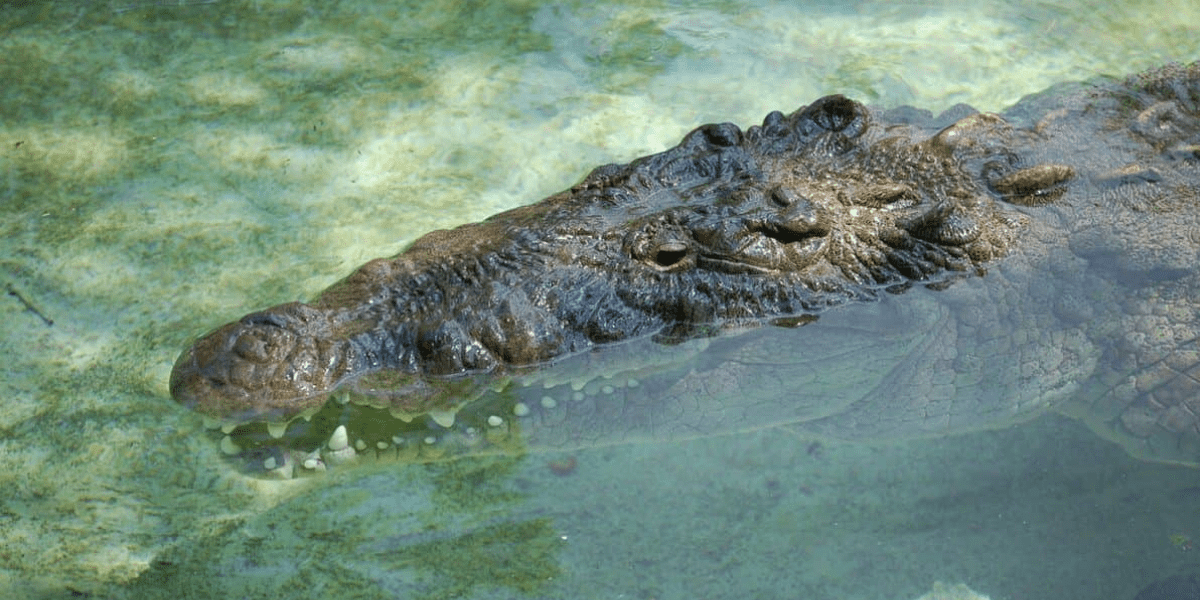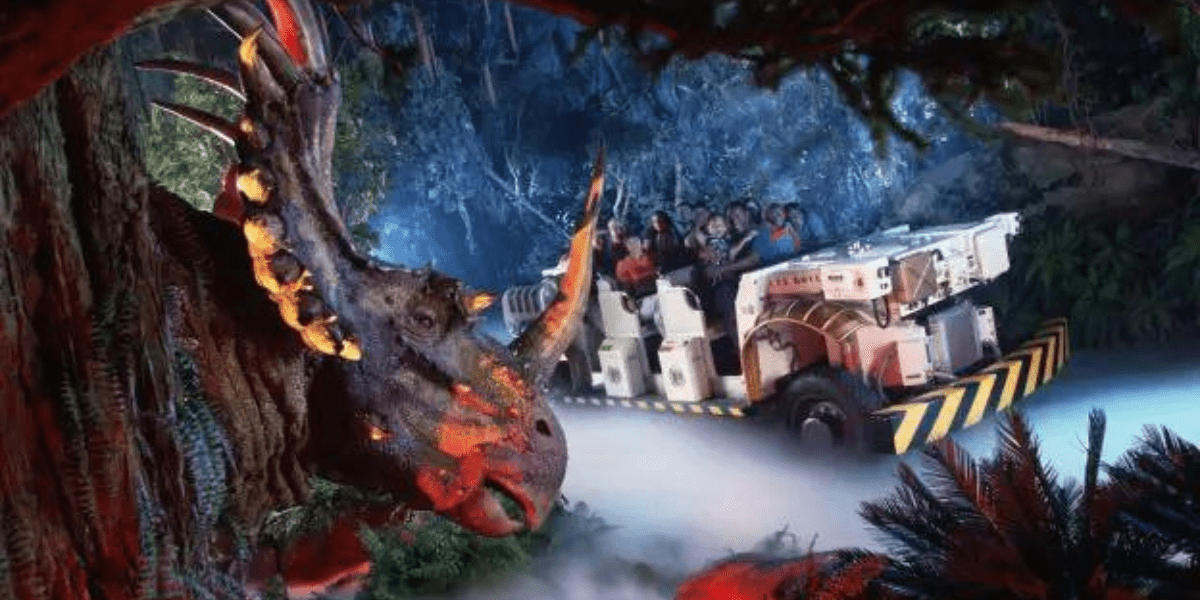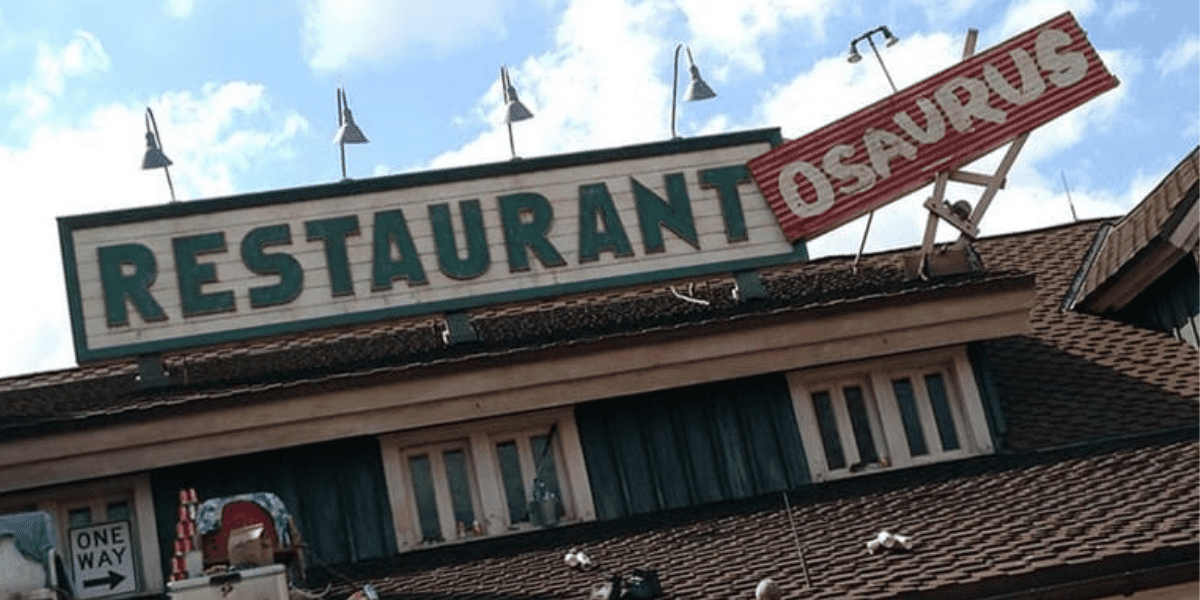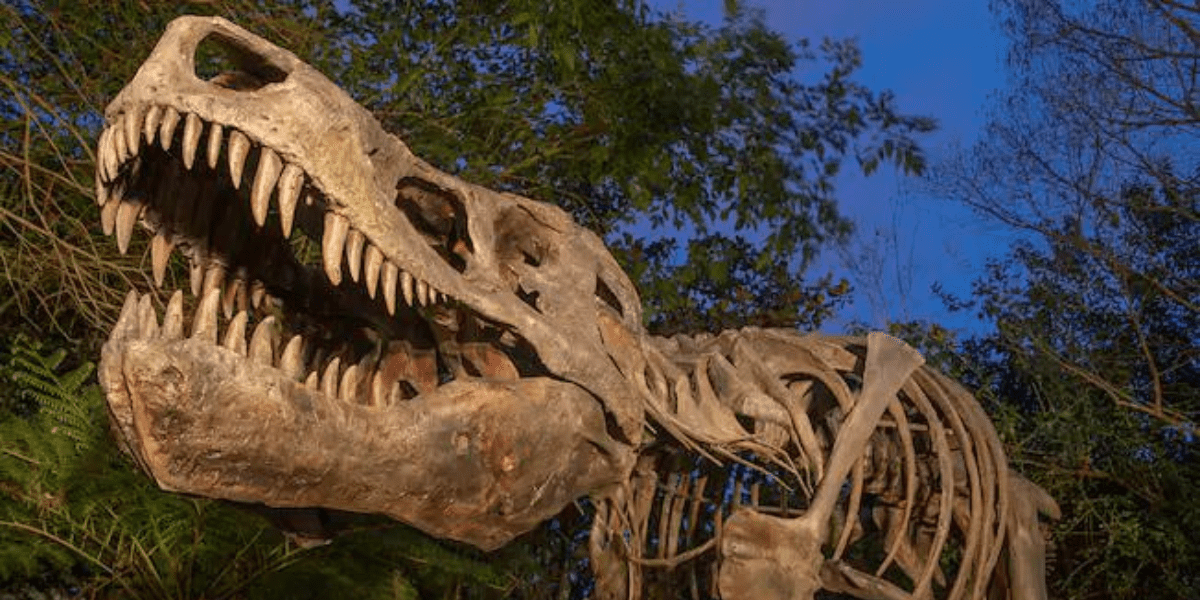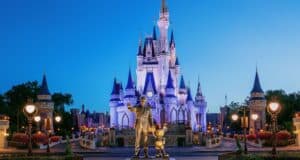
The Walt Disney Company excels in the art of crafting clever and creative stories. We’ve seen their handiwork repeatedly throughout various films and other presentations. And their intricate incorporation of detailed backstories into numerous theme park attractions is one of the many things that sets them apart from everyone else.
Every backstory Disney thinks up is a uniquely well-plotted and structured tale that gives far more elaborate details than most attending Guests ever fully realize. They’re too busy enjoying the end result excitement to pay attention to all the intricate ins and outs of the storyline. So admittedly, many of the subtler details often get overlooked and are easy to miss.
The section in Disney’s Animal Kingdom Park, known as DinoLand U.S.A., is perhaps the perfect example of an often overlooked, nearly obscure backstory. And it’s sad to say that the existing motif itself is well on its way to going extinct, as it was revealed back in September 2022 during the D23 EXPO that the Walt Disney Company is seriously considering a massive overhaul to this longtime underperforming area in the Park. For the time being, however, all the plans that have been teased are tentative at best, and no solid dates have been set for when DinoLand U.S.A. will be gone for good.
Whether you favor a thematic overhaul to the site or are a devoted fan of the prehistoric pleasantries it presents, it’s still worth getting to know more about the existing backstory Disney devised for DinoLand U.S.A. So, here is what DinoLand U.S.A. is really all about.
RELATED: Dinoland USA’s Backstory Proves It’s NOT Actually the Worst!
Park History
Before fully appreciating the elaborate backstory of DinoLand U.S.A., it is important to learn more about the Park in which it is located. Disney’s Animal Kingdom Park opened in 1998, becoming the fourth theme park comprising Walt Disney World Resort. Also serving as an accredited zoological park by the Association of Zoos and Aquariums, the site is composed of an impressive 580 acres and is home to over 2,000 different animals. Disney’s Animal Kingdom currently contains seven different lands, each containing its own working motif and corresponding attractions. These lands include the Oasis, Discovery Island, Pandora – The World of Avatar, Rafiki’s Planet Watch, Africa, Asia, and DinoLand U.S.A., of course. As you’d expect, DinoLand U.S.A. has a working motif focusing mainly on dinosaurs. But that’s just the start of a much more developed tale.
RELATED: Disney’s Animal Kingdom Expansion: Here’s What We Know
The Regional Location of DinoLand U.S.A.
It is not uncommon for Disney to utilize specific regional locations when incorporating certain motifs. We see this most prevalently in the Animal Kingdom with such lands as Africa and Asia. Also, Pandora — The World of Avatar uses location as a distinction, even though it is entirely fictionalized. Still, the idea of DinoLand “U.S.A.” being a place that’s both prehistorically linked yet distinctly American may be somewhat intriguing. What exactly is going on here? Even more confusing is the fact that the rather meager selection of animals being exhibited here includes the Asian Brown Tortoise, Red-Legged Seriemas, the Abdim’s Stork, and the American Crocodile. Except for the last example, these seem like rather odd choices for an American/prehistoric venue. But then again, it would be much more difficult to feature live dinosaur exhibits, even with Chrono-Tech’s breakthroughs in time travel. But to better explain that cryptic statement, we must dive right into the DinoLand U.S.A. theme.
RELATED: OpEd: Why Disney’s Animal Kingdom Needs Australia
The Land’s Theme
DinoLand U.S.A.’s theme is a very interesting combination of prehistoric dig site meets roadside attraction-laden Americana. As the story goes, the year was 1947, and this site was little more than a pitstop in the Midwest—an area comprising primarily of a small fishing lodge along Highway 498 and a gas station run by an elderly couple named Chester and Hester. When an amateur fossil hunter coincidentally uncovered what he believed to be a couple of old dinosaur bones in the area, he had his paleontologist friend confirm the find to be both authentic and rare. This led to many professionals in the field flocking to the area in hopes of finding more bones and completing an important skeleton reconstruction of said “rare” dinosaur. More bones were indeed found, and then some! That old ramshackle fishing lodge was eventually purchased by the new team of fossil hunters during the process, where it served multiple functions as a museum, a school/dormitory for paleontology students, and even a mess hall for scientists, volunteers, and even tourists to the area. From there, “Diggs County” bloomed into a popular prehistory lover’s haven.
The Dino Institute
With so many students new to the area, the Dino Institute eventually emerged. While starting out humbly within that old ramshackle shack, the school eventually expanded to become a highly regarded, prestigious institution. That’s how that impressive paleontological facility best known for housing DinoLand U.S.A.’s anchoring attraction DINOSAUR came about.
In continuation of the backstory at hand, the Dino Institute partnered with a research facility known as Chrono-Tech where they stumbled upon a revolutionary breakthrough in time travel via way of innovative time rover vehicles. This enabled them to even start offering public time travel tours back to the Early Cretaceous Period. Enter the whole DINOSAUR attraction subplot!
Chester and Hester
Old-timers Chester and Hester, who long operated their humble gas station well before the glory that overtook Diggs County, remained in the area the rest of their lives. But the changing times and situations also brought changes to what they once considered their livelihood. And that’s what led them to cash in on the sudden tourist boom by establishing a roadside carnival setup full of fun rides, games, and gift shops. And so, that is how Dino-Rama came into being. Furthermore, this backstory explains in more detail why this part of Animal Kingdom has always been a bit campy, somewhat conventional, and lackluster compared to Disney’s usual above-and-beyond standards. In short, that’s how it was intended to appear in order to accurately portray the Americana roadside attraction kind of feeling. And if you look carefully at the ground, you’ll even see that it literally looks like it was constructed on street terrain.
Restaurantosaurus
Remember that old fishing lodge that served so many purposes? Well, its main focus eventually shifted to being the primary food operation. It was then largely referred to as “Restaurant”—a straightforward calling that left no doubt about what it was all about. But fun-loving students, always up for banter and a good laugh, added their own creative touch to the “Restaurant” sign with their classic “osaurus” suffix in honor of the whole prehistoric motif. Keep an eye out for the many other fun puns the students added around here as well, for there are many!
As you enjoy a quick service meal of all your favorite American-style fixings, do take time to absorb all the intricate tributes and callouts to the restaurant’s long and storied history as it pertains to the established plot. All the subtleties work wonderfully in piecing together the structure’s intended versatile past.
RELATED: DinoLand U. S. A. Spot at Disney’s Animal Kingdom is Now Totally Extinct, Gone Forever
The Boneyard
You know that nice kiddie dig site simply referred to as “The Boneyard”? Well, this was, in fact, the very area where the first bones were uncovered. Today it is a fun folly for children to dig around in and maybe make a few new discoveries of their own.
Dino Sue
It’s fun getting into the very meticulous albeit fictional backstory comprising DinoLand U.S.A. But you should know that not all of the attractions here are solely works of Disney imagination. For instance, did you know that an exact replica of the largest and most intact Tyrannosaurus Rex ever uncovered can actually be found on location at DinoLand U.S.A.? Known more familiarly as Dino Sue, this carbon copy of the original stands appropriately at the entrance of the DINOSAUR attraction, measuring 40 feet long and 13 feet tall.
The T-Rex that Dino Sue is modeled after was uncovered by fossil hunter Sue Hendricks. More than 90 percent of her bones are accounted for, and she is known to have lived more than 67 million years ago, during the Late Cretaceous Period. Sue is estimated to have weighed seven tons when she was alive and spanned 42 feet in length. This makes her the largest known Tyrannosaurus Rex on record.
RELATED: 8 Totally Cool Things About Dino-Sue At Walt Disney World
We can examine many other elaborate extras in more intricate detail around DinoLand U.S.A., but these are the primary callouts. Now that you know a little more about the backstory of this underrated part of Disney’s Animal Kingdom, you may just feel a little differently about its pending fate and uncertain future.

 DisneyTips.com Your Guide To A Great Disney Vacation
DisneyTips.com Your Guide To A Great Disney Vacation


